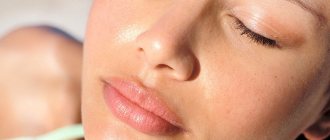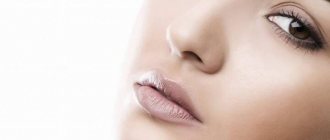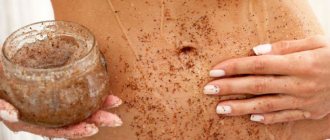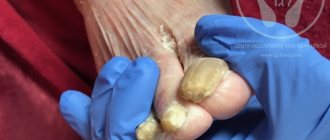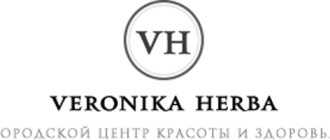In stores you can find cosmetics with various sun protection factors - from SPF 4 to SPF 50.
Therefore, modern women are often concerned with questions: what is SPF, what protection factor should a product have, how to choose and use sunscreen correctly?
- The benefits and harms of the sun and tanning
- Sun protection
- Skin phototypes according to Fitzpatrick
- What is SPF
- Degree of protection
- My favorite sunscreen 2020
- How to choose sunscreen
- Ultraviolet Index (UVI)
- My recommendations for residents of Russia and Ukraine
- Mistakes of using sunscreen with SPF
- Chemical peels, acids, retinol
- SPF, makeup and questions answered
The benefits and harms of tanning
Just a hundred years ago, in high society there was a cult of snow-white skin, and even men wore wide-brimmed hats, and ladies used hats, gloves and sun umbrellas - just to protect their skin from tanning.
But in the 20s of the last century, Coco Chanel introduced a fashion for tanning, and the situation changed dramatically. It has become popular to relax on the seaside, and tanning has become a symbol of a beautiful life.
However, over time, doctors sounded the alarm. It turned out that excessive tanning is not very good for health - the number of skin cancer cases has increased, and in addition, it has been proven that sun rays cause photoaging and can accelerate the natural aging of the skin.
The general craze for tanning has been replaced by the widespread use of sunscreens with a super high degree of protection SPF 100, as well as a new mental disorder - heliophobia - an obsessive fear and fear of being in the sun.
But despite this, the situation with health and photoaging has not improved, but, on the contrary, has worsened. And some experts believe that the reason for this is the widespread use of sunscreens. Or rather, their incorrect use.
Benefits of the sun
We need a moderate amount of sunlight for our health, for the beauty of our skin, and for a good mood.
- When exposed to sunlight, our body produces vitamin D, which is necessary for bone formation.
- With a lack of ultraviolet radiation, collagen synthesis decreases, which leads to sagging skin and the appearance of wrinkles.
- The sun's rays promote the production of happiness hormones, improve mood and strengthen the immune system.
In other words, it is not ultraviolet radiation itself that is harmful, but its excess.
The sun: from benefit to harm one step:
Probably everyone knows why the sun is beneficial? Without the sun, neither a blade of grass grows nor our body is able to produce vitamin D, which is necessary for the formation and maintenance of strong bones.
Sunny weather is the easiest and completely free way to overcome bad mood and depression, because the sun's rays produce in our bodies that same internal drug - serotonin or the hormone of happiness.
But as often happens, an excess of benefit automatically becomes harm. And the damage the sun causes is absolutely serious.
What harm can the sun cause to a person?
1. The most dangerous thing is that the sun can provoke the development of melanoma and skin cancer , one of the most terrible modern diseases, which has spread significantly since the times when sunbathing became fashionable (let me remind you that it was introduced into fashion by Coco Chanel in the 20s of the last century, before that time, all noble gentlemen and ladies hid from the sun and only serfs working in the fields walked around tanned and pockmarked).
2. The sun in excess quantities destroys collagen in the skin, contributing to its dehydration and premature aging. This phenomenon has even acquired a separate term - photoaging . This, by the way, also applies to tanning in a solarium. No amount of tanning cream in a solarium can prevent this. A long time ago, when tanning in a solarium was very fashionable, I already wrote about why I gave up tanning in a solarium and wouldn’t go there again for any price.
These two things are more than enough to take the topic discussed today seriously.
One of the most important beauty dogmas and a truth that does not require proof is that in order to preserve and prolong the youth of the skin, you need to avoid any tanning and, in general, long exposure to direct sunlight.
But since this is practically impossible, shouldn’t we sit in a dungeon all summer and our entire vacation at sea? And a lack of sun is also harmful to health; firstly, you need to maintain a balance, secondly, use sunscreen, and thirdly, follow the rules of a beautiful tan.
Sun protection
How to protect yourself from excessive exposure to sunlight? First of all, you need to limit your time in the sun and not sunbathe between 10 a.m. and 4 p.m.
Nature has given us a great built-in mechanism for limiting sun exposure. If you overdo it, an ordinary white person becomes red as a lobster, and in the worst case, even covered in blisters.
But when we use sunscreen, we lose this natural control and our alertness decreases accordingly. Filters that protect us from spectrum B rays prevent us from getting too burned. Therefore, a modern person often lies on the beach for 2-3 hours in the heat of the day and does not get blisters, which is naturally incredibly happy!
And, of course, there is nothing to be happy about. No sunscreen provides 100% protection from excessive sun exposure. In other words, a cream with SPF is not designed to make us lie on the beaches longer, but to enhance protection during forced long periods of exposure to the sun.
All about sun rays uva and uvb
To find the best sunscreens, you need to learn more about the sun's uva and uvb rays. So, the sun's rays consist of three spectra, namely:
- A (UVA). The safest spectrum for human health. It is he who is responsible for a beautiful bronze tan. At the same time, it dries out the skin, which leads to the appearance of wrinkles, age spots and stretch marks. In addition, sun allergies may occur.
- B (UVB). Can be classified as a medium level of threat to human skin. This spectrum accelerates the production of melanin in the body, which protects the body from the negative effects of ultraviolet radiation. If you overuse sunbathing, you can get skin burns and even cancer.
- C (UVC). High level of danger. It is this spectrum that leads to the development of skin cancer.
Also interesting: Is it possible to tan with SPF 50 cream?
To get a beautiful tan and protect yourself from skin diseases, it is recommended to choose sunscreens that have protection against A, B and C radiation.
Skin phototypes according to Fitzpatrick
There is such a thing as a minimum erythemal dose - this is the dose of solar radiation that causes minimal visible redness of the skin. This dose is individual and depends on the phototype.
All people are divided into 6 phototypes depending on skin color:
- Celtic type - never tan, always burn - fair skin, often with freckles, red or blonde, light eyes.
- European Nordic type - sometimes tan, but more often get sunburned - fair-skinned, light brown hair, sometimes dark brown, light eyes.
- Central European type - tan well, sometimes burn - brown or light eyes, dark brown or brown hair and ivory skin without freckles.
- Mediterranean type - tan well, never burn, dark eyes, dark hair and dark skin without freckles.
- Indonesian or Oriental type - always tan, never burn - dark skin, dark hair and eyes.
- African - never burns - very dark skin, black hair and eyes.
What is SPF
SPF is the Sun Protection Factor (SPF), which measures how long you can sit in the sun before getting sunburned. Or, to be more precise, how many times does the minimum erythemal dose increase when using a given sunscreen.
For example, if without sunscreen your skin usually turns red after 5 minutes at the beach, then using a product with SPF 10 can prevent you from getting sunburned for up to 50 minutes.
Of course, these numbers are very arbitrary and give only a rough idea of how protected you are from spectrum B rays, which cause erythema (redness of the skin) and sunburn.
However, SPF does not indicate how protected you are from spectrum A rays. These rays are more insidious - they do not cause redness or any discomfort, but penetrate deep into the skin and contribute to photoaging.
And although many modern sunscreens contain both physical and chemical filters that protect against both Spectrum A and Spectrum B rays, it is still not known for certain whether photoaging can be completely prevented with the help of sunscreens.
So the most reliable protection against excessive exposure to sunlight to this day is to limit exposure to the sun!
Degree of protection
What degree of protection do products with SPF provide? Conventionally, sunscreens are divided into the following groups:
- SPF 2-4 – basic protection, protects from 50-75% UV
- SPF 4-10 – medium level of protection, protects from 85% UV
- SPF 10-20 – high degree of protection, protects against 95% UV
- SPF 20-30 - intense protection, protects against 97% UV
- SPF 50 – sanitary block, protects from 99.5% UV
That is, the difference between a cream with SPF 30 and SPF 50 is very insignificant. And products with SPF above 50 today no longer meet modern standards.
Composition of sunscreen
Modern sunscreens usually contain both physical and chemical filters.
Physical filters create a screen and thus reflect the sun's rays of spectrum B. In sunscreen formulations you can find filters such as:
- Titanium dioxide
- Zinc oxide
Chemical filters adsorb ultraviolet rays. These include:
- Tinosorb S (Bis-Ethylhexyloxyphenol Methoxyphenyl Triazine)
- Avobenzone (butyl methoxydibenzoylmethane)
- Benzophenone and others
The dangers of sunscreens
As you probably already guessed, there are different degrees of protection for a reason and you need to choose products not with the maximum, but with the optimal SPF. Optimal for you.
Because sunscreen filters in large quantities can themselves have harmful effects on the skin.
For example, chemical filters can cause allergic reactions, and physical filters can provoke an exacerbation of acne.
How to choose products with SPF?
Which SPF factor is better to choose depending on your skin type? What types of SPF products are there? Are there any products with SPF in the CeraVe line? Now we will tell you everything.
Types of SPF products
Sunscreen filters can be included in a wide variety of cosmetic categories: creams, lotions, sprays, milks... You can choose these products based on the most pleasant texture and density for you, as well as the presence of certain care components.
In addition, it is very important to understand that “sunscreens with SPF” are, as a rule, products whose main function is direct protection against ultraviolet rays. They may have additional care functions (for example, mattifying, antioxidant, etc.), but are intended directly for use on the beach or in the open summer sun.
But in “care” products with SPF, sun filters are more of an auxiliary component. Such beauty products are not suitable for use on the beach or in active sun - they are intended rather for additional skin protection in urban environments or in cloudy weather.
Moisturizing facial lotion CeraVe SPF 25
A good example of such a product is CeraVe moisturizing facial lotion with SPF 25, intended for normal to dry facial skin. It contains components both for skin care and for protecting it from ultraviolet rays:
- ceramides - helping to strengthen the protective functions of the skin, reducing its vulnerability to negative environmental factors;
- hyaluronic acid and glycerin – helping to moisturize the skin and maintain its moisture for a long time;
- a wide range of filters - helping to provide effective protection against UVA and UVB rays.
Moisturizing facial lotion SPF 25
For normal to dry skin
Provides effective broad-spectrum protection against UVA and UVB sun rays and intensely hydrates skin for 24 hours.
52 ml
More details
CeraVe Moisturizing Lotion helps maintain skin hydration for a long time and protect it from the negative effects of ultraviolet rays.
Selection of products according to skin phototype
The degree of protection in products with SPF can be selected depending on your skin phototype. We present to your attention a simple table that will help you determine your type:
| Phototype | Description |
| Phototype I (Celtic) | White (porcelain) skin, freckles, light eyes and blond or red hair. The skin is very sensitive to the sun, does not tan well, and burns quickly. |
| Phototype II (fair-skinned European) | Light skin, gray, blue or green eyes, light brown, brown hair. The skin tans slowly and is prone to sunburn. |
| III phototype (dark-skinned European) | Dark skin, light brown eyes, dark brown or dark brown hair. The skin tans well, burns rarely and moderately. |
| Phototype IV (Mediterranean) | Dark (“olive”) skin, dark brown eyes, dark, “chocolate” hair. The skin tans quickly and is practically not prone to sunburn. |
| V phototype (Middle Eastern) | Noticeably dark skin, black eyes and hair. The skin tans quickly and intensely without burning. |
| VI phototype (African) | Dark skin, eyes and hair. Sensitivity to the sun is extremely low. |
Of course, skin of any phototype must be protected from UV radiation. Moreover, the lighter the phototype of a person’s skin, the more responsibly he needs to approach the issue of sun protection. People with types I-III in open and active sun are recommended to use an SPF of at least 50, and in the city or during cloudy seasons - 15-25. For those with skin phototypes IV-VI, you can reduce the degree of protection from UV rays - without forgetting, however, the need to use it in principle.
In addition, it is very important to protect skin of any phototype from exposure to ultraviolet rays after various cosmetic procedures. In this situation, it is recommended to use sunscreen even in winter, for two weeks or longer (as recommended by a cosmetologist).
My Favorite Sunscreen 2022
Last spring I first tried the new VITABRID cream - C12 ALL-DAY UV Defense SPF 50+, and have been using it for a whole year.
The cream contains ONLY physical filters, which completely eliminates harmful effects on the body. Protects against spectrum A and B rays. Maximum protection level: 50+ and PA++++.
In addition, the cream contains stabilized vitamin C and provides antioxidant protection.
For readers of my blog there is a 10% discount on orders of all Vitabrid products.
Compositions
When choosing a dermal care product, you should pay attention to the composition of the product. As mentioned earlier, all protective equipment has chemical and physical filters.
The most common and safest are physical filters such as zinc oxide, titanium dioxide, etc. These components are not able to penetrate deep into the epidermis and accumulate there. The effect of the cream begins immediately after applying the product to the dermis.
The presence of zinc oxide in the composition helps prevent the formation of free radicals and protects the epidermis from harmful ultraviolet rays.
Titanium dioxide is a mineral component that has strong protective properties for the dermis. Mineral components are reflectors of sunlight.
Persons with sensitive skin are recommended to use cosmetics that contain lecithin and salicylic acid. These components perfectly protect the skin, nourish it and moisturize it. Once on the epidermis, lecithin begins to protect the dermis from harmful effects on the skin, and salicylic acid fights inflammation and redness of the epidermis.
In addition to physical and chemical filters, various oils are added to the sunscreen, such as avocado, coconut oil, etc., as well as vitamins A, E, minerals and antioxidants.
How to choose sunscreen
How to choose the sunscreen that's right for you? To do this, you need to take into account several factors:
- Your age
- Lifestyle
- Skin condition
- Ultraviolet index in your region
As you probably already guessed, it is almost impossible to give universal advice for everyone.
Since I live and work in Kyiv, I am primarily interested in the situation in Ukraine. Therefore, I will give recommendations that are suitable primarily for residents of Kiev and residents of most other cities of Ukraine, as well as residents of countries with a similar climate - for example, Russia and Belarus, where the situation with the ozone layer and ultraviolet index is approximately the same.
Well, if you live in America, Australia, Thailand, Israel or Spain, you better consult with local specialists or study the situation in your region yourself.
Ultraviolet Index (UVI / UV Index)
Ukrainians are lucky - in our country the situation with the ozone layer is better than in many other countries and the ultraviolet index is not very high. In the autumn-winter period, when we wear hats, UGG boots and gloves for six months and only our faces are exposed, using sunscreen with a high SPF is not only impractical, but also harmful.
Because in this case, you will experience a lack of ultraviolet radiation and get the very problems you hope to protect yourself from - decreased synthesis of collagen, vitamin D and, as a result, skin aging, brittle bones and bad mood.
To determine the ultraviolet index, and accordingly the required degree of protection in your region, you can use the convenient website nesgori.ru.
For example, today, the ozone layer in Kyiv is good, and the ultraviolet index is low - 3. And these readings are expected at midday. On a day like this, do I need intensive protection in the morning on my way to work? Like a hare, you need a fifth leg.
But if we check Sydney, for example, we will see that the situation there is completely different - the ozone layer is thinner and the ultraviolet index is higher. In general, if you suddenly live in Australia, now you should use high-protection products every day, and in addition, it is better to stay indoors during the midday hours.
ps If you use a smartphone, then your weather application probably displays up-to-date information about the current UV index. In the iPhone app it looks like this:
Age
In addition to place of residence, age is of no small importance - young and mature skin up to 30-35 years of age is protected from the sun much better than at an older age. So with age, protection needs to be strengthened.
Lifestyle
And of course, you need to take into account your lifestyle. It’s one thing if you’re an office worker and spend all day indoors, and another thing if you’re a young mother and walk with a stroller all day.
My recommendations for residents of Russia and Ukraine
During the spring-summer period, for office workers with healthy skin, on a weekday I recommend using their usual products with a medium or high degree of protection, that is, with SPF from 4 to 15 - this is quite enough.
But if on a weekend you go on a picnic, to the beach, or even just for a walk around the city, I recommend using intensive protection products, that is, with SPF 25–30.
But for people who, for whatever reason, are completely contraindicated in the sun, intensive protection is constantly needed in the summer, and for such clients I recommend using products with SPF 25-30 daily.
For example, those who undergo aggressive cosmetic procedures, people with hyperpigmentation, vitiligo, those who take medications that increase sensitivity to the sun - antibiotics, diuretics, hormonal drugs.
Mistakes of using sunscreen with SPF
You are probably all familiar with the situation: a beach, a person sits on a sun lounger and begins to apply sunscreen. And then the tube of cream sits for a couple of hours under the scorching sun on the table next to the sun lounger. It wouldn't be surprising if such a person ended up getting pretty badly burned.
- Sunscreen should be applied at least 20 minutes before going out into the sun, that is, while at home or in a hotel room. Otherwise, you will have time to get burned before the chemical filters take effect.
- Sunscreen should be reapplied after every swim or every 2 hours in the sun. Otherwise, sunscreen filters will lose their effectiveness and do more harm than good.
- The sunscreen should not be in direct sunlight - at the beach, put the tube of cream in your bag, otherwise the filters will very quickly lose their effectiveness.
Types of creams
When choosing a cosmetic product, you should pay attention not only to the degree of protection, but also to its other functions. Sunscreens come in various types and properties.
Multifunctional
Multifunctional cream performs several functions for the skin at once. Thanks to its rich composition, it is able to moisturize the epidermis, saturate and nourish it with essential substances, and also protect the dermis from premature aging.
The product contains vitamin E to moisturize the skin, oils to nourish the epidermis, and hyaluronic acid for rejuvenation. Protection level SPF 50 with P++++ filter, that is, it provides maximum protection against ultraviolet radiation. A good example is L'Oreal.
MULTI-FUNCTIONAL SUN PROTECTION CREAM FOOD A HOLIC MULTI SUN CREAM SPF50+ PA+++has an average cost in Russia of 450-500 rubles.
Protective
The main purpose of sunscreens is to ensure safe sun exposure. Such products contain components that do not allow harmful ultraviolet rays to penetrate deep into the epidermis.
Read this material on how to use Floralis cream with SPF-50.
Nutritious
Nourishing facial care products are most often used at night, as they contain vitamins and oils that are so necessary to preserve the youth and beauty of the epidermis. It also contains various plant extracts, such as echinacea.
At night, the facial muscles relax, which means that nutrients can penetrate deeper into the epidermis. The nourishing creams contain panthenol, which promotes skin regeneration. The average protection level of these creams is SPF 30. Such products are available in the Faberlic line.
The average cost of nourishing sunscreen Cora is 400-450 rubles.
Moisturizing
Many people believe that only dry skin needs additional hydration. In fact, this is not the case, and with age, any type of dermis needs additional moisture. Using a moisturizer helps retain the necessary moisture in the skin and protect the dermis from drying out in the sun.
Moisturizing creams contain various extracts, oils and vitamins. It is also recommended to use products containing hyaluronic acid and elastin if you are over 30. A good example is Librederm Bronzeada face and décolleté cream SPF 30.
Moisturizing sunscreen Mild Sun Block SPF 45 costs 600-700 rubles.
Day
Face care creams are divided into day and night. They differ not only in composition, but also in consistency. The daytime product is designed to provide optimal levels of hydration throughout the day. The protection of day creams depends on your skin type.
It is advisable to use at least SPF 15 for daytime protection. Such products require the presence of glycerin, which maintains the lipid balance of the dermis, Shea butter, for moisturizing and nourishing. Avon multi-protective day cream is popular.
Sunscreen from Arkady costs 950 rubles in Russia.
Anti-aging
Fading and aging skin needs additional protection. You should choose care products with SPF from 30 to 50. The product should contain hyaluronic acid, peptides, collagen and elastin, coenzymes, etc. These components are mandatory components of all anti-aging cosmetics. They protect the skin from premature aging and promote dermal regeneration. Lecithin can relieve inflammation and redness, so its presence in the composition is also a good sign. Cream with peptides SPF-50 Lora meets all these criteria.
The cost of sunscreen from Garnier is 400-500 rubles.
Under makeup
When choosing sunscreen for makeup, you should give preference to those products that have a protection level of at least SPF 30.
You can choose a sunscreen BB cream, this way you can solve problems in applying foundation. BB cream is selected to match the skin color and has the necessary degree of protection.
Sunscreen BB cream from Garnier costs 600 rubles.
Layer-by-layer application of cosmetics with SPF
In what order should you apply SPF cream, moisturizer and makeup to your face?
How to do all this correctly? The rule here is simple. It is advisable that the SPF cream be on top. For example, if you use a moisturizer and you have a cream with SPF, then apply the moisturizer to your face first, and then apply your SPF cream on top.
If you do not go outside without makeup, then it is wiser to purchase your foundation with an SPF factor. In this case, you first apply moisturizer to the skin, and then apply your foundation or bb cream or cc cream with SPF factor on top. After this, you can also powder yourself with powder with SPF.
But following the “SPF on top” rule is not always possible. Because it happens that your favorite foundation does not contain an SPF factor or contains a very low SPF factor.
In this case, you apply SPF cream under your foundation. But you need to keep in mind that in this case the level of protection is slightly reduced, because you are diluting the SPF cream with the product that you apply on top.
Sun screen in decorative cosmetics
Decorative cosmetics with SPF filters, which are so actively promoted by brands, deserve special attention. Of course, it would be great to buy a foundation with SPF 30, apply it to your face and combine business with pleasure - create an even complexion and protect yourself from the sun. But, unfortunately, it doesn't work that way.
The recommended amount of sunscreen applied to the face is approximately 2 mg per square centimeter of skin. Imagine what your face will look like with a whole spoonful of foundation applied to it. If Sanskrin is applied in smaller quantities, the degree of protection drops significantly, and most often tends to zero. It turns out that foundations with SPF give a false sense of protection.
The question arises - how to paint. Sunscreen on the face does not have to be in close contact with the skin, that is, be the very first layer - it can be perfectly combined with decorative cosmetics. To provide protection from the sun, but at the same time make the usual makeup, apply products like this:
- With the first layer, prepare the skin in the usual way - apply cream, serum, facial lotion;
- Next, use sunscreen - apply a thick layer of the product at the rate of 2 mg per square meter. cm;
- Apply foundation or concealer as the third layer after the previous layer has been completely absorbed. It is better to apply foundation with a slapping motion so as not to smear the layer of sun protection product.
Makeup and how often to reapply sunscreen
One of the common questions is what to do with makeup if the cream with chemical filters needs to be renewed every 2 hours? Should I apply SPF cream over foundation or remove all makeup and reapply the cream to a cleansed face?
Chemical filters actually oxidize when exposed to ultraviolet rays and turn into free radicals, which cause even more damage to the skin than ultraviolet radiation.
But they oxidize not every 2 hours, but every 2 hours of exposure to the sun . And accordingly, sunscreen needs to be renewed not every 2 hours, but every 2 hours of exposure to the sun. It doesn’t matter whether it’s 2 hours in a row or the total for the day.
For example, if you walked to work in half an hour in the morning, went to a cafe for 15 minutes at lunch, and walked for half an hour in the evening and returned home, then you do not need to renew your sunscreen. Because you spent a total of less than 2 hours in the sun.
But if, for example, you are walking on an excursion, somewhere near the pyramids in Egypt under the scorching sun for 2 hours, then in this case it is really better to completely wash off the cream, cleanse your face and reapply sunscreen. And if necessary, reapply makeup.
What harm can it cause
The safest and most harmless filters for the human body are physical filters that reflect B ray radiation. The main negative point when using cosmetics with physical filters is clogging of pores and the possibility of developing inflammation. Most of all, such symptoms appear in people suffering from inflammation and acne formation.
Chemical filters are capable of adsorbing ultraviolet radiation. The danger of using chemical filters lies in their ability to penetrate deep into the epidermis and accumulate in the skin, having a toxic effect on the body as a whole. This manifests itself primarily in severe allergic reactions, hormonal imbalances, etc., so pregnant and lactating women should not use cosmetics with chemical filters.
Chemical components can harm reproductive function in men, so it is not recommended to use such cosmetics frequently.
How do I protect myself from the sun?
On a normal workday, I use a regular day cream with medium protection because I spend almost all day indoors. Another thing is a day off or a trip to the sea.
I love the sun, I love a light tan, but I strictly limit my time in the sun - I’m on the beach for no more than 30-60 minutes, always with high SPF sunscreen and, if possible, I try to spend most of my time in the shade or under an umbrella, especially at sea .
You will never see me on the beach between 10 am and 4 pm.
Safe filters
Well-formulated SPF creams use the following components, which (at least for today) have no questions:
- Diethylamino hydroxybenzoyl hexyl benzoate (may also be called Uvinul A Plus).
- Octyl Triazone / Ethylhexyl Triazone (may also be designated Uvinul T 150).
- Methylene bis-benzotriazolyl tetramethylbutylphenol (may also be designated Tinosorb M, bisoctrizole).
- Bis-Ethylhexyloxyphenol Methoxyphenyl Triazine (may also be called Tinosorb S, bemotrizinol).
- Terephthalylidene dicamphor sulfonic acid (may also be called Mexoryl SX).
- Drometrizole trisiloxane (may also be called Mexoryl XL).
The listed filters last the longest in the sun and protect against type A and B rays.
There are other filters, but they are either rarely used or protect only from type B rays. A complete list of UV filters approved for use in perfumery and cosmetic products is given in TR CU 009/2011 “On the safety of perfumery and cosmetic products.”
Answers on questions
Cream with SPF and vitamin D
If we use cream with SPF, then how does the vitamin D that we need so much get into our body?
Vitamin D does not enter, but is synthesized in our body under the influence of ultraviolet rays. But no cream with SPF provides 100% protection from the sun, and in addition, in the summer our arms and legs are left exposed.
This way, you will still receive the necessary dose of ultraviolet radiation for the synthesis of vitamin D. To do this, it is not at all necessary to lie on the beach for hours, but rather a walk in the park or on the way to work.
Using products with different SPFs at the same time
And if you apply cream with SPF 30 and powder or foundation 15 on top, what kind of protection will there be?
SPF is never cumulative. In the best case, a product with SPF with higher protection will work. But there are times when the product can reduce protection.
For example, if a girl applied cream with SPF 20, and then applied foundation with SPF 10 on top, then it is quite possible that it will slightly dilute the previous cream and the protection will no longer be 20, but slightly lower, for example 15.
How to renew SPF cream in extreme conditions
How to renew cream with SPF while traveling in the desert or in the mountains when there is no access to a washbasin? Or maybe it’s better without cream at all?
If you were not born and raised in the jungle, then you still better use sunscreen. And updating it is quite simple. You probably have a bottle of drinking water with you and you can simply wash your face, pat your face dry and apply a new portion of cream.
And if there is not even water, then you can take wet wipes with you and wipe your face with wet wipes, remove the cream that you applied a few hours ago and apply a new portion of cream.
Sun protection without SPF
In everyday life, we apply a fair amount of decorative cosmetics to our skin; they do not always contain SPF, but the question is: don’t the layers of cosmetics themselves create mechanical protection from the sun on the surface of the skin?
It’s absolutely true that any high-quality cream has a base that in itself protects our skin from the harmful effects of the environment, including the sun.
This is why young skin, which still produces enough of our own cream, is better protected from the sun than mature skin after 35-40 years.
How much cream to apply to face and neck
Many sources recommend applying 1/4 teaspoon of sunscreen to your face and the same amount to your neck. But what if it’s foundation with SPF or powder, because that amount will be too much?
You need to understand that these recommendations apply primarily to long stays in the active sun - when you are on the beach, on a boat trip or on an excursion in hot countries. Because when you swim, wipe off sweat, or lie on a towel, you lose some of the protection.
In this case, in order to provide the skin of the face, neck and décolleté, and the whole body, with reliable protection, you need to use a cream with a high SPF and you really need to apply it to the skin in large quantities without saving.
And it shouldn’t be a foundation, it should be a regular sunscreen. But if we are talking about everyday life, then most people go to work in the morning, return in the evening, during the day they go out for a maximum of 10-20 minutes in a cafe for lunch, that is, they practically never spend time in the active sun.
Plus, don’t forget that women very often apply several layers of SPF products to their facial skin. Day cream with SPF, foundation or BB cream with SPF, and powder on top.
And although SPF is not cumulative, and the degree of protection will be determined by the product with the highest SPF, these layers themselves will still provide you with more reliable protection. So in the city you shouldn’t worry about this and apply plenty of sunscreen.
Rules for a beautiful tan:
- It is imperative that everyone and everyone use sunscreen cosmetics (even children, even the most brutal brutalists) This is not a matter of pampering, it is a matter of health!
- In the summer, choose a treatment with antioxidants and apply it under sunscreen; I’ll tell you why this is so important below.
- In sunny weather, you should definitely wear good quality sunglasses , because... The retina of the eye can also be damaged by active sun. This is especially true for those with light eyes; it is no coincidence that nature endowed southerners with brown and black eyes and gave all people eyelashes to protect their eyes.
- Caps and hats - especially wide-brimmed ones - will not only help to hide from excess sun rays, but will also save you from sunstroke
- Plan your stay on the beach, in the garden, or on a walk - during safe hours - before 11 am and after 4 pm , when the sun's rays are not so sizzling and cruel.
- On the beach, it is best to sunbathe under an umbrella or in the shade of trees ; if you get sunburned, it will not add beauty to you, and it may well cause health problems. A sunburn can result not only in redness of the skin, but also in fever and in some cases can cause hospitalization.
- Be sure to drink enough water . Sweet waters, soda and beer cannot replace it! Maintaining an optimal level of hydration will help you better cope with hot weather, but will also have a beneficial effect on the condition of your skin.
- Never apply perfume, essential oils or products containing them to areas of the skin exposed to the sun - this can lead to sunburn and pigmentation!
- If, despite all the prohibitions, you still want to bring back a beautiful tan from vacation, start taking antioxidant vitamins or multivitamin complexes with a good composition (vitamins A, E and C), Q10 and antioxidant dietary supplements, as well as collagen at least a couple of weeks in before your trip and continue to take them throughout your vacation. On vacation, eat fresh fruits and vegetables; they contain a large amount of vitamins, including those beneficial for the skin. Carrots and apricots contain carotene, tomatoes, especially after heat treatment, contain lycopene, nuts contain easily digestible fats - all this is very useful for the skin, and therefore for tanning. You can also buy special “vitamins for tanning”, for example Oenobiol or Oxelio (my review of them with a detailed description and composition), or take all these vitamins separately. Actually, all this will not be superfluous even for those who never sunbathe and do not plan to do so.
- For a beautiful tan - the skin must be in good condition - pay special attention to scrubbing and moisturizing . The sun will only dry out dry skin with a keratinized layer even more and there will be no question of any beautiful tan.
- Be sure to moisturize your skin every day after sunbathing. The ideal companion in this matter is aloe vera gel, moisturizing sprays and after-sun creams. Moisturizing masks before and after sunbathing should become your must-have assistants.
- In order not to “scare” people on the beach with your pale appearance and blue legs, if this is so important to you, you don’t need any solariums, buy yourself a high-quality self-tanner . Personally, I really like the Terracotta line from Guerlain, Sisley also has good self-tanners and facial bronzer powders with beautiful shades, I would even say that Guerlain and Sisley have the best self-tanners that exist and are available in Russia. My review of “Gazelle Legs” TERRACOTTA JAMBES DE GAZELLE by GUERLAIN. They have a pleasant scent, apply smoothly and come off without bald spots or stains. Even luxury competitors are much inferior to them in quality, in this case, in my opinion, the savings are not at all justified. You can read reviews of different bronzers on my website using this link.

